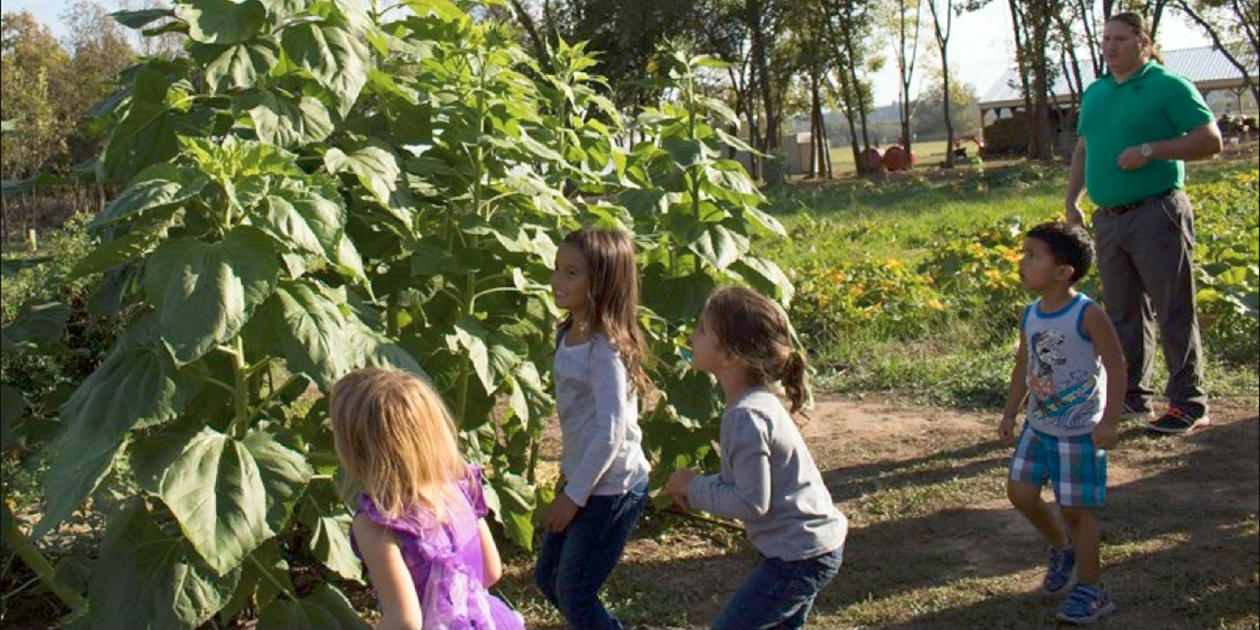Fresh Food for the Osage Nation: Researchers and a Native Community Work Toward Improved Food Resources and Food Sovereignty
Chief Geoffrey Standing Bear and Assistant Chief Raymond Red Corn had a vision for their Osage—or Wah-Zha-Zhi—tribe.
Their vision was to achieve food sovereignty and sustainable agriculture for the Osage Nation, a Native American tribe living in rural northeastern Oklahoma.1
Historically, the Osage people relied on hunting, fishing, and growing vegetables for their food. After they were forced to move to the Osage reservation in Oklahoma, they were unable to maintain their traditional ways of eating.2
The Osage people, like other Native communities, turned toward shelf-stable foods that are high in sodium, fat, and sugar.3 The produce available in local grocery stores is expensive, not very fresh, and limited in quantity. This means many Osage families drive 2 hours to stores in Tulsa for their food and produce, which adds the cost and burden of gas, mileage, and time.
Many years of dependence on outside food sources have had significant impacts on both the culture and health of the Osage people and other Native Americans. Native Americans are at higher risk for obesity, high blood pressure, and diabetes than other people in the United States. 4 5

The Osage leadership started to work on finding land for a farm that would provide fresh fruit and vegetables to school programs and, one day, to all of the Osage Nation. This was part of the Indigenous food sovereignty movement that is restoring seasonal growing and gathering practices to reverse unhealthy eating habits, in which the historical loss of tribal lands and resulting food deserts have played a part.
The Osage leaders knew that improving the food environment could affect the health of their people, but they wanted to work with someone who could assess and assign a value to the health benefits they hoped they would see by making changes to their food system.
So they got in touch with Dr. Valarie Blue Bird Jernigan, who is a public health researcher specializing in Native American health at the University of Oklahoma, a recipient of the NIMHD Loan Repayment Program, and a member of the Choctaw Nation. The NIMHD Loan Repayment Program helps health professionals working in the area of health disparities research by assisting them with repayment of their student loans.
Together, the Osage leadership and Dr. Jernigan developed the Food Resource Equity and Sustainability for Health (FRESH) study, which is looking at a community gardening program’s impact on vegetable and fruit intake, as well as its effects on body mass index (BMI) and high blood pressure in Osage families.6
“Native people have this experience with food that has to do with historical removal, relocation, and restriction to reservations, and then dependency on commodity foods,” says Dr. Jernigan. “For many of us, we have been in this long sleep of colonization. And we are starting to wake up from this colonization.” She says Native Americans are thinking about where their food comes from, aspects of culture that have been lost, and what they need to do to get those back. “Right now is a big revitalization initiative when it comes to food, and the environment, and the way we relate to and connect to the land.”

Four towns on the Osage Nation reservation—Fairfax, Hominy, Pawhuska, and Skiatook—are involved in the FRESH community gardening program. The first phase of the study took place in the spring of 2018. Pawhuska and Fairfax participated in the program, while the other two towns—Hominy and Skiatook—did not, to act as controls. The towns are switching roles for the second phase of the study in the fall of 2018.
Children ages 3 to 5 at Head Start programs in these towns participate in a 15-week curriculum that encourages fruit and vegetable consumption. The program is a comprehensive experience in which children work in the garden, touch and taste fruits and vegetables, learn stories about the crops, and cook and eat meals using the produce they have grown.
As part of the program, the children paint the walls of the raised garden beds. The garden vegetables are labeled in the Osage language, which the children are learning. The researchers have replaced generic classroom books with books in the Osage language, and the curriculum includes stories about vegetables that have cultural importance, such as the Three Sisters—squash, beans, and corn. The teachers and researchers are working together to increase the children’s willingness to try new vegetables and foods and, ultimately, to eat more of them.
Dr. Jernigan and her colleagues have also revamped the menus in the Head Start programs. They reduced fat in the children’s menus by 30%, eliminated many fried foods, and increased fruit and vegetable servings.
Parents and other caregivers are actively involved with the study. They participate in a 12-week online workshop, in which they watch videos made by Osage community members that explain a weekly lesson and incorporate role-playing with children. The videos and other materials provide information on topics like understanding nutrition information, handling picky eaters, and reinforcing positive eating habits with children.
Beyond the weekly parenting nutrition education workshops, families of the children in the Head Start programs participate in monthly cultural nights. On these evenings, families come together at the Head Start programs to see the children’s gardening work and share a culturally appropriate meal.
Since the community gardening program is part of the larger initiative to change the Osage Nation’s food system, Dr. Jernigan thinks any positive changes that the Osage families achieve will likely be sustainable. Dr. Jernigan hopes this study will increase children’s willingness to try and eat vegetables and lower BMI and blood pressure. The program and its findings will be shared with other Native communities across the country to help other people improve their food environments and health.7
The FRESH study is being conducted alongside efforts toward food sovereignty which will reduce the Osage Nation’s dependence on outside food sources. Dr. Jernigan believes it is not possible to address diabetes, BMI, and hypertension in a culturally centered way without addressing the entire food system. One of the Osage members said to her, “You can’t heal the people without healing the food system.”
Dr. Jernigan is also organizing weekly community planning sessions, during which people from the four study towns on the Osage reservation are developing plans for moving toward food sovereignty. These plans will be implemented in the 2 years following the community gardening program.
During these planning evenings, people learn about indigenous cooking and prepare a meal using recipes from Sean Sherman’s James Beard Foundation Award–winning cookbook The Sioux Chef’s Indigenous Kitchen. The meals serve as a focal point for attendees’ discussions about their experiences with food and what they hope to achieve with food sovereignty.
Dr. Jernigan says that the NIH and NIMHD’s participation in funding health interventions for Native populations has a profound impact and that these funding mechanisms provide an opportunity to make a real difference in improving the health of Native people. “The community—what they said about this study—is that it has made a bigger impact on the lives of these people than any other effort has so far and that we have made a difference in their lives. That these kids’ lives are going to be different because of what we’ve done.”
References
- The Osage Nation. (2018). Retrieved from https://www.osagenation-nsn.gov/
- National Park Service. (2015). The Osage. Retrieved from https://www.nps.gov/fosc/learn/historyculture/osage.htm
- National Public Radio. (2018). How might Trump’s food box plan affect health? Native Americans know all too well. Retrieved from https://www.npr.org/sections/thesalt/2018/02/25/588098959/how-might-trump-plan-for-food-boxes-affect-health-native-americans-know-all-too how-might-trump-plan-for-food-boxes-affect-health-native-americans-know-all-too
- Jernigan, V. B. B. (2018). Using community-based participatory research to develop healthy retail strategies in Native American-owned convenience stores: the THRIVE study. Preventive Medicine Reports, 11, 148-153. doi: 10.1016/j.pmedr.2018.06.012
- Jernigan, V. B. B., Boe, G., Noonan, C., Carroll, L., & Buchwald, D. (2016). Assessing feasibility and readiness to address obesity through policy in American Indian reservations. Journal of Health Disparities Research and Practice, 9(3), 168-180.
- National Institutes of Health Research Portfolio Online Reporting Tools (RePORT). Food Resource Equity and Sustainability for Health or FRESH. Retrieved from https://projectreporter.nih.gov/project_info_description.cfm?projectnumber=1R01MD011266-01
- National Library of Medicine. (2017). Food Resource Equity and Sustainability for Health (FRESH). Retrieved from https://clinicaltrials.gov/ct2/show/NCT03251950
Page updated March 6, 2024 | published Nov. 1, 2018
















